Products
-
 1-Year-Old Patient Intraosseous Infusion and Injection Leg Skills Trainer (S407)S407.PKLearn More
1-Year-Old Patient Intraosseous Infusion and Injection Leg Skills Trainer (S407)S407.PKLearn MoreThe MIKE® and MICHELLE® 1-Year-Old Patient Intraosseous Infusion and Injection Leg Skills Trainer simulates a one-year-old pediatric patient's leg for IV training exercises. The leg is attached to a half section of a lower torso. A replaceable tibial bone lies under a smooth outer skin and is molded with anatomic landmarks for teaching intraosseous access and infusion. A femoral vein/ artery pair and an intramuscular injection site are included.
-
 1-Year-Old Patient Injection Training Arm (S406)S406.PKLearn MoreThe 1-Year-Old Patient Injection Training Arm simulates the arm of a one-year-old for neonatal IV training. The lifelike veins support multiple needle sticks to ensure participants can hone skills in pediatric IV administration, phlebotomy, and drug administration.
1-Year-Old Patient Injection Training Arm (S406)S406.PKLearn MoreThe 1-Year-Old Patient Injection Training Arm simulates the arm of a one-year-old for neonatal IV training. The lifelike veins support multiple needle sticks to ensure participants can hone skills in pediatric IV administration, phlebotomy, and drug administration. -
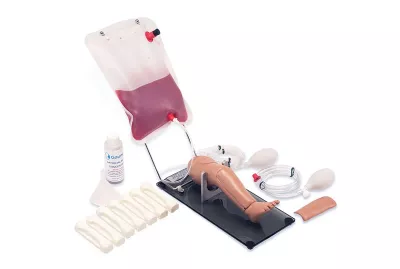 Newborn Intraosseous Infusion and Injection Leg Skills Trainer S409S409.PKLearn More
Newborn Intraosseous Infusion and Injection Leg Skills Trainer S409S409.PKLearn MoreThe Susie Simon® Newborn Intraosseous Infusion and Injection Leg Skills Trainer simulates that of a newborn for IV training exercises. A replaceable tibial bone lies under a smooth outer skin. It includes anatomic landmarks for teaching intraosseous access and infusion. A femoral vein/artery pair and an intramuscular injection site are included.
-
 Newborn Injection Training Arm S408S408.PKLearn MoreThe Newborn Injection Training Arm simulates the arm of a newborn for IV skills training. The lifelike veins support multiple needle sticks to ensure participants can hone skills in newborn IV administration, phlebotomy, and drug administration.
Newborn Injection Training Arm S408S408.PKLearn MoreThe Newborn Injection Training Arm simulates the arm of a newborn for IV skills training. The lifelike veins support multiple needle sticks to ensure participants can hone skills in newborn IV administration, phlebotomy, and drug administration. -
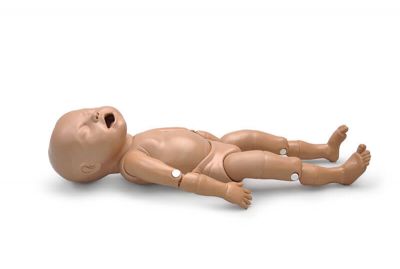 Articulating Newborn for Leopold Maneuvers for Obstetric SUSIE® S500S500.5.PKLearn More
Articulating Newborn for Leopold Maneuvers for Obstetric SUSIE® S500S500.5.PKLearn MoreThe S500.5 is a newborn simulator for Obstetric SUSIE® designed to help students practice and develop essential obstetric skills. Students can work hands-on and learn the four examination maneuvers used to ascertain the position of the fetus within the pelvic cavity.
-
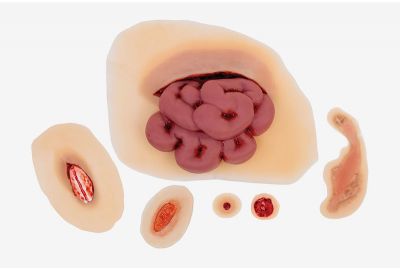 Disaster & Vehicular Trauma Wound Kits (WK170 & WK175)WK170 & WK175Learn More
Disaster & Vehicular Trauma Wound Kits (WK170 & WK175)WK170 & WK175Learn MoreThe Disaster & Vehicular Trauma Wound Kits can simulate various traumatic injuries commonly seen in emergencies, including burns, fractures, lacerations, and gunshot wounds. These wounds can be used with many Gaumard® trauma simulators to add realism to emergency care training programs. Participants can assess the severity of the wounds, formulate a treatment plan, and work hands-on to practice treating severe injuries.
-
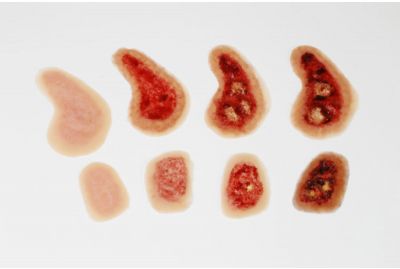 Newborn Burn Kit Wound Kit (WK155)WK155Learn More
Newborn Burn Kit Wound Kit (WK155)WK155Learn MoreThe Newborn Burn Wound Kit can be used to simulate 1st, 2nd, and 3rd degree burns to the face, abdomen, arms, legs, and back of newborn patients. This wound kit can be used with many Gaumard® newborn simulators to add realism to trauma scenarios. Providers can assess the lifelike burns to prepare treatment plans and practice newborn wound care skills.
-
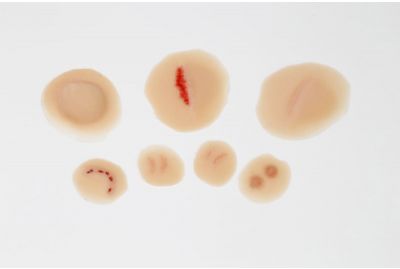 Newborn Incident Wound Kit (WK150)WK150Learn More
Newborn Incident Wound Kit (WK150)WK150Learn MoreThe Newborn Incident Wound Kit simulates common newborn injuries, including bites, stings, scratches, and bumps. This wound kit can be used with many Gaumard newborn simulators to add realism to trauma scenarios. Participants can practice proper wound care and management skills to ensure safe and effective neonatal patient care.
-
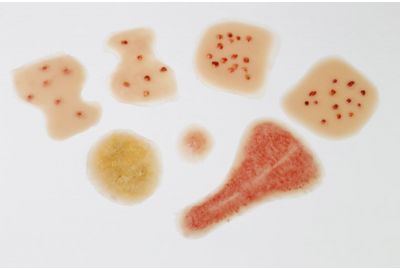 Newborn Skin/Rash Wound Kit (WK160)WK160Learn More
Newborn Skin/Rash Wound Kit (WK160)WK160Learn MoreThe Newborn Skin / Rash Wound Kit simulates common newborn skin conditions, including bumps, rashes, patches, and scales. This wound kit can be used with many Gaumard® newborn simulators to add realism to newborn care scenarios and ensure participants practice and hone clinical skills needed to diagnose and provide care for harmless and alarming conditions.
-
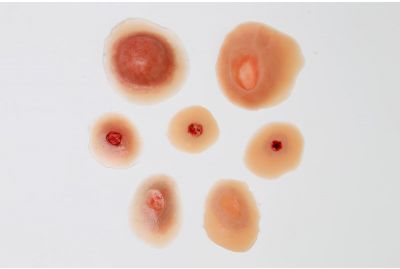 Newborn Trauma/Abuse Wound Kit (WK165)WK165Learn More
Newborn Trauma/Abuse Wound Kit (WK165)WK165Learn MoreThe Newborn Trauma and Abuse Wound Kit helps students practice how to identify and evaluate suspected child abuse and neglect victims. These wounds can be used with a variety of Gaumard® newborn simulators and placed in multiple locations on the body to help participants develop the skills needed to assess, identify, and provide care for accidental and non-accidental trauma.
